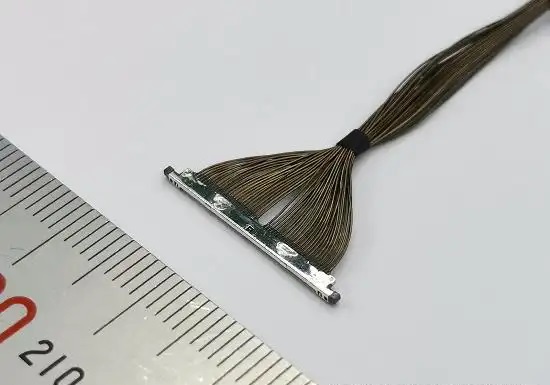In today's high-end electronic products such as drones, laptops, wearable devices, and medical electronics, ultra-fine coaxial cables (Micro Coaxial Cable) have become an important component for high-speed signal transmission. Known for their small size, high flexibility, and excellent electrical performance, they are widely used in systems with compact space and dense signals. However, many engineers often neglect a key detail during design or use—the impedance mismatch. This seemingly minor deviation can directly affect signal quality and system stability.

What is impedance matching?
In short, impedance matching is to keep the impedance of the signal source, transmission line, and load consistent. When the three impedances are equal, the signal can be transmitted smoothly without reflection, thus maintaining the integrity of the waveform and system stability.
For ultra-fine coaxial cables, the common design impedance is either 50Ω or 75Ω, depending on the application scenario. Once it deviates from this range, problems such as signal attenuation, waveform distortion, and crosstalk interference may occur.

Two, the five major impacts of impedance mismatch
Signal reflection and waveform distortion
When the impedance is not matched, part of the signal energy will be reflected back, superimposed on the original signal to form waveform distortion. This not only causes signal distortion but may also trigger data errors, affecting the stability of system communication.
Signal attenuation and reduced transmission distance
Impedance differences can lead to increased signal energy loss and rapid attenuation of signal strength with distance. This phenomenon is particularly pronounced in high-speed transmission applications, which can directly shorten the effective communication distance.
Crosstalk increases, interference intensifies.
In high-density bundle arrangements, impedance mismatch can amplify electromagnetic interference (EMI) between adjacent cables, causing crosstalk issues, which in turn affect the normal signal transmission of other channels.
4. It is difficult to pass the EMC test.
Impedance mismatch leads to the deterioration of the overall electromagnetic compatibility (EMC) of the system, making it easier for the device to exceed the limits in EMI testing. This not only increases the cost of rectification but may also delay the product launch cycle.
5. High-speed signal integrity受损
In high-speed interfaces such as MIPI, LVDS, USB 3.0, and HDMI, impedance mismatch will significantly affect the opening of the eye diagram, leading to an increase in error rate and consequently affecting image quality and transmission speed.

How to avoid impedance mismatch?
Select high-precision manufactured Micro Coaxial Cable
High-quality wire materials can ensure impedance control within ±5% range, ensuring transmission consistency from the source.
Optimize PCB and connector impedance design
Reasonably plan the wiring width, routing layer, and connection method to achieve system-level impedance matching.
Use professional testing equipment
Through the use of instruments such as TDR (Time Domain Reflectometer) to detect cable impedance consistency, deviations can be identified and corrected in a timely manner.
Pay attention to the bend radius of the harness.
Overstretching or sharp bending will cause impedance changes, affecting signal integrity, and minimum bending radius specifications should be followed.

Although the volume of extremely fine coaxial cables is small, their role in high-speed signal systems is crucial. Impedance matching not only relates to signal quality but also affects the entire system's EMC performance and data integrity. Therefore, strict control of impedance matching should be maintained in all stages of selection, layout, processing, and testing to ensure stable, efficient, and reliable transmission of the cables.
I am Kunshan Jie Kang Fu Precision Electronics, long-term focused on the design and customization of high-speed signal cables and ultra-fine coaxial cables, committed to providing stable and reliable high-speed interconnection solutions. If you have any related needs or want to learn more, please contact: Manager Zhang.
18913228573 (WeChat same number).



